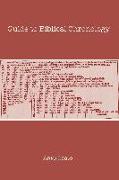Guide to Biblical Chronology
BücherAngebote / Angebote:
This Guide to Biblical Chronology aims to explain why different chronological proposals exist for the reigns of kings of Israel and Judah and how the conflicting chronological data preserved in the Books of Kings have come into being. The first step is to reconstruct older chronological data so that synchronisms are in harmony with each other. Only then can the chronological data be related to extrabiblical documents, such a comparison reveals a good degree of correspondence. This means that the chronological records of the kings of Judah and Israel during the period between 930 and 586 BCE must have based on reliable annalistic records from royal archives. After the destruction of Samaria, synchronic chronological presentations of the history of Judah and Israel were composed and the Deuteronomistic editors used them. They drew their own conclusions from the source material and created a chronology of their own, which sometimes led to the contradictions we can detect in the present form of the Hebrew Bible. Another important result is that the 480-year period mentioned in 1 Kings 6 and the 300-year period in Judges 11 are also based on the pre-Deuteronomistic chronological tradition even though they are not based on archival material and are therefore unreliable figures. The Guide to Biblical Chronology also deals with postbiblical Jewish chronology, showing that there were in existence two different and competing chronological systems. One was based on Daniel 9.24-27 and followed by Josephus, and the other was first advanced by Demetrius the Chronographer in the late third century BCE and was then followed in the Damascus Document from Qumran and in Second Baruch.
Folgt in ca. 10 Arbeitstagen




